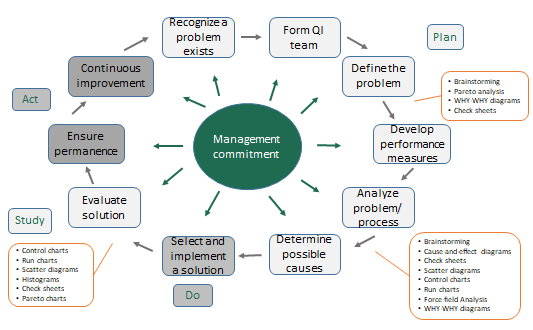Quality Improvement Essentials
The Problem-Solving Process
As obvious as it sounds, the first step in problem solving is recognizing the existence of a problem. This becomes important once you consider that people have to adopt and implement a solution - individuals and team members that you probably don't have any direct control over. Behavior change is tough, and if the people on the front lines don't recognize an issue as a problem, then they are less likely to change their routines.
A “problem” in our context is defined as a gap between the existing state and the desired state. From this perspective, we view problems as a design issue: we examine the situation, propose a solution, then implement that solution and measure its effectiveness. The value of this approach is that it does not treat partially effective measures as “failure”, rather as an opportunity to learn more about the problem so that the next iteration of the solution moves us closer to the desired state. This is the essence of W. Edwards Deming’s Plan-Do-Study-Act (PDSA) cycle, which has become the basis for all quality improvement theories in modern organizations. Donna Summers13 unpacks the PDSA cycle into ten problem-solving steps and provides several illustrations of how the process can be applied in a manufacturing environment to address problems:

Once again, you should note the parallels between the problem solving methods presented here and the broader environment in which you operate. Each of these tools – brainstorming, Pareto analysis, process maps, force-field analysis, can be used to solve problems in more complex healthcare environments. They provide a framework on which solutions can be built; and though the solutions will invariably be imperfect, if they are analyzed methodically and applied consistently, they will improve any existing situation and provide data that forms the basis for continuous improvement.